WHAT DO YOU WANT TO LEARN MORE ABOUT?
Biophilic Design – What’s That? (Part 1)
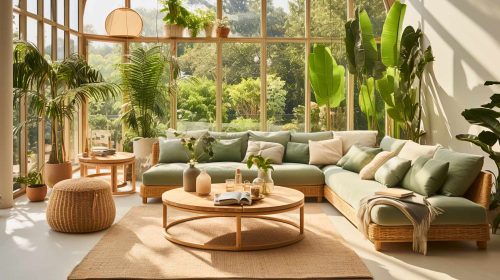
“In every walk with nature, one receives far more than he seeks.” – John Muir
I don’t know about you, but I love plants! I mentioned in our last blog the trend to infuse our interiors with greenery. Then I thought, hmmmm, maybe we need to dive a little deeper into plants. I’m a pretty avid gardener, and gardening has long been a passion for many people. But what about interior design and indoor plants? How does this enhance our living environment? How does this add to our goal laid-back luxury?
Welcome to the first installment of our two-part series on biophilic design – a concept that celebrates the innate connection between humans and nature within the realm of interior design. In my last blog, Spring 2024, Design Trends that Balance Style, Sustainability, and Technology, we briefly discuss biophilic design as a new buzzword in the design world.
What is Biophilic Design?
Humans possess an innate affinity for nature, and incorporating natural elements into our surroundings can enhance well-being, productivity, and overall quality of life.
Coined by biologist Edward O. Wilson in the 1980’s, biiophilic design, derived from the Greek words “bios” meaning life and “philia” meaning love, is a design philosophy that seeks to integrate natural elements and processes into the built environment.
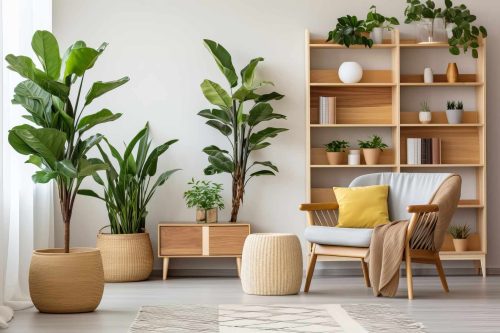
Evolution of Biophilic Design:
Over the years, biophilic design has evolved from a niche concept to a widely accepted practice within the field of interior design.
This topic makes me think of my hair salon – The Noble Bear in Ambler, PA. The first time I walked in I immediately liked the owner before I even met her! Why? Because there were plants everywhere! Trailing vines over the hair stations, cacti in dramatic pots, and a collection of huge indoor trees in the entry. It made the salon feel very welcoming, hip, and friendly – which it is. Check out these photos of The Noble Bear. How fun, right?
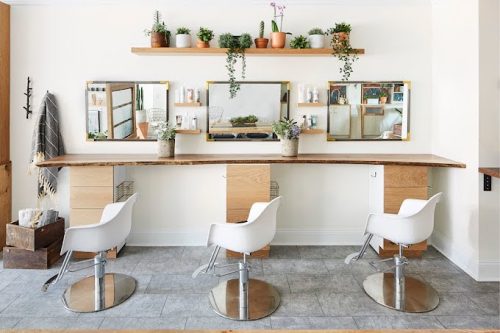
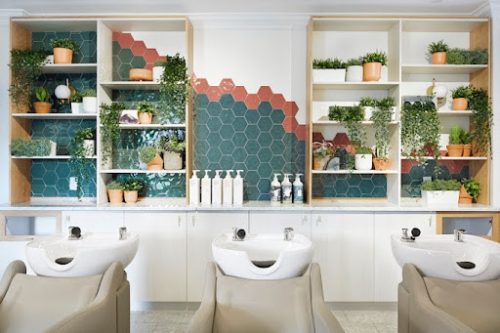
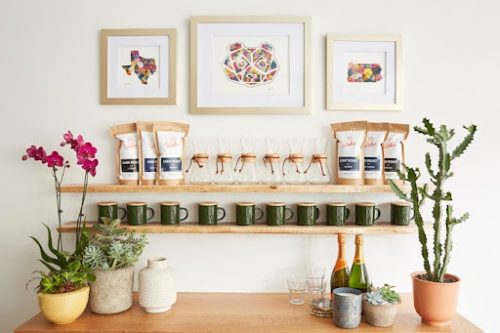
Wellness and sustainability awareness continues to grow, and designers and architects are increasingly embracing biophilic principles as a means of creating spaces that not only look beautiful but also foster health and happiness.
Here are some of the benefits of Biophilic Design
Enhances overall well-being and mental health:
- Biophilic design has been shown to have a profound impact on human health and well-being. By incorporating elements of nature into interior spaces, such as natural light, greenery, and organic materials, biophilic design helps create environments that promote relaxation, reduce feelings of stress, and improve mood. Studies have found that exposure to nature, even in indoor settings, can lower blood pressure, heart rate, and cortisol levels, leading to a greater sense of calm and overall well-being.
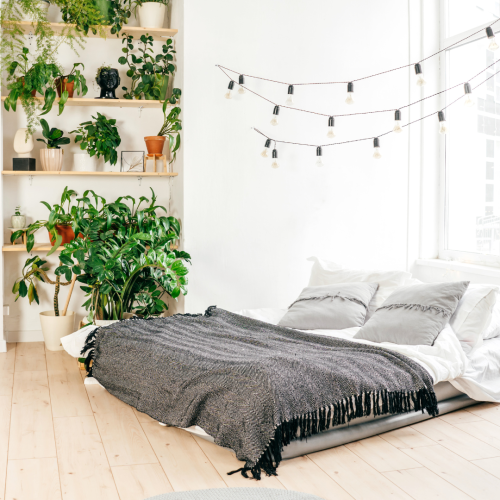
Improves air quality and indoor environmental quality:
- Integrating living plants into your home environment not only adds visual appeal but also helps purify the air by removing toxins and increasing oxygen levels. Plants act as natural air filters, absorbing harmful pollutants and releasing clean oxygen, thereby improving indoor air quality. In addition, biophilic design strategies such as natural ventilation and the use of sustainable materials contribute to healthier indoor environments by reducing indoor air pollution and promoting better ventilation.
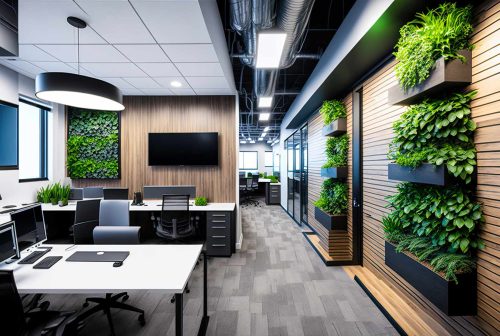
I’d much rather go to work in this space than one full of bland, soulless cubicles. How bout you?
Boosts productivity and creativity:
- Biophilic design has been linked to increased productivity and creativity in at work. Exposure to natural elements, such as sunlight and greenery, has been shown to enhance cognitive function, concentration, and problem-solving skills. By creating environments that mimic natural settings, biophilic design stimulates the brain and encourages innovative thinking, leading to higher levels of productivity and creativity among occupants.
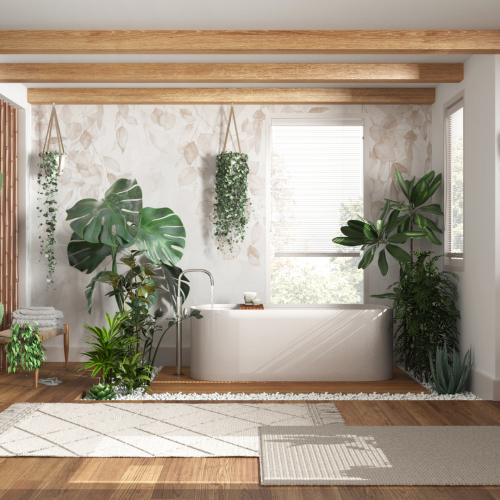
Reduces stress and anxiety:
- Nature has a calming effect on the human mind, and biophilic design harnesses this power to create spaces that promote relaxation and reduce stress. Studies have found that exposure to nature, even through simulated environments like indoor gardens or nature-inspired artwork, can lower levels of stress and anxiety.
- Incorporating natural elements into interior spaces, such as water features, natural textures, and views of nature, helps create a sense of tranquility and connection to the outdoors, thereby reducing feelings of stress and promoting mental well-being.
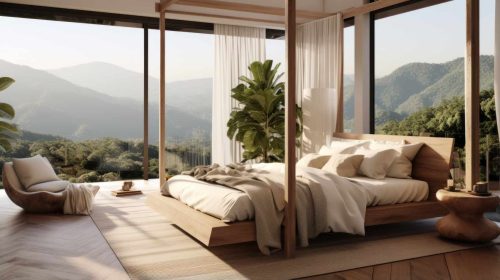
Increases connection to nature and biophilia:
- Biophilic design aims to strengthen the bond between humans and the natural world, fostering a deeper connection to nature and promoting biophilia – the innate love and affinity for living things.
- By bringing elements of nature into interior spaces, biophilic design encourages occupants to engage with their surroundings, whether through direct interaction with plants, views of natural landscapes, or sensory experiences like the sound of running water or the scent of flowers.
- This connection to nature not only enhances well-being but also instills a sense of stewardship and appreciation for the environment.

Promotes sustainable design practices:
- Biophilic design aligns with principles of sustainability by emphasizing the use of natural materials, energy-efficient systems, and environmentally conscious design strategies. By incorporating elements of nature into interior spaces, biophilic design reduces the need for artificial lighting, heating, and cooling, thereby conserving energy and minimizing the environmental footprint of buildings. Additionally, biophilic design promotes the use of locally sourced materials, renewable resources, and green building practices, contributing to a more sustainable built environment.
Biophilic design represents a holistic approach to creating spaces that not only serve functional needs but also nurture our innate connection to the natural world. In Part 2 of our series, we’ll delve deeper into the key principles and strategies of biophilic design, exploring how designers can effectively integrate nature into interior spaces to enhance the human experience.
Stay tuned for part 2 for more insights, inspiration, and practical tips on embracing nature within your design projects!


Hi, I’m Holley Pokora, and since 2001, I’ve worked with builders, realtors, and homeowners creating beautiful, swoon-worthy spaces that are right for you. Are you ready for a designer home of your dreams? Book a consultation!

